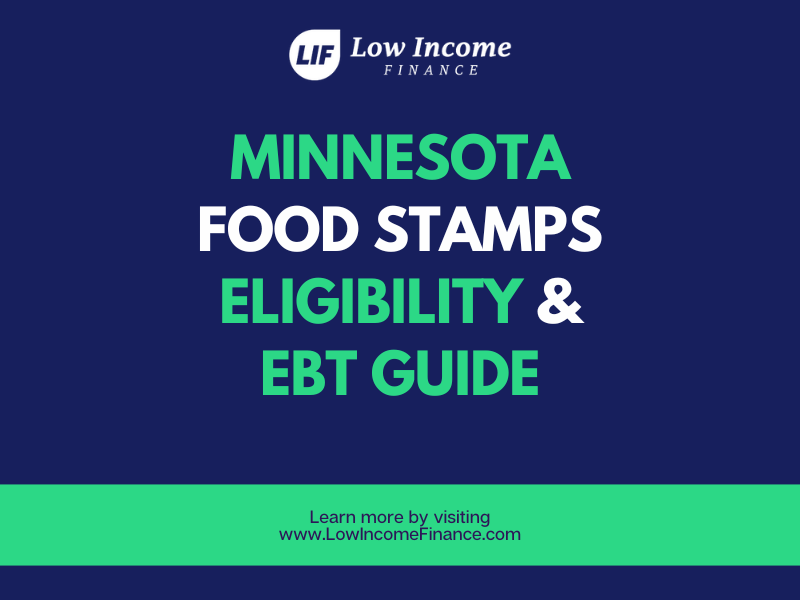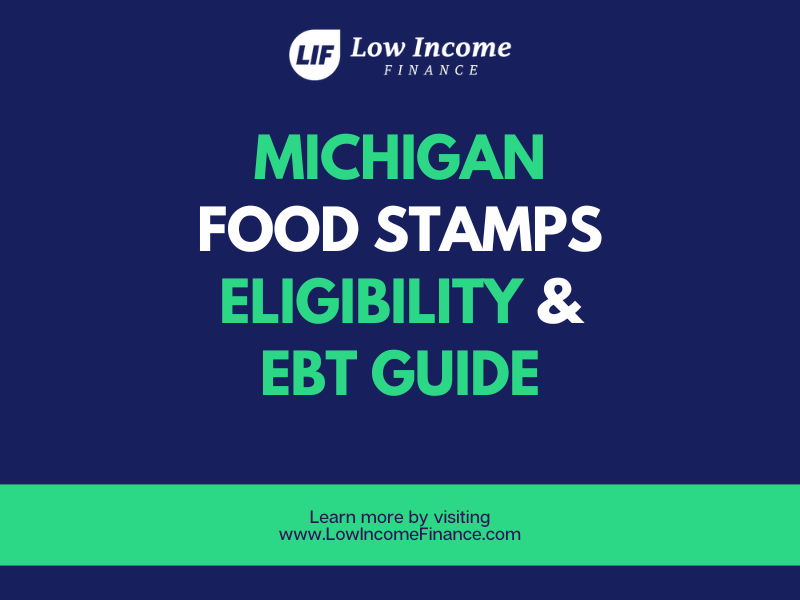If you’ve been wondering, “What is WIC and what’s it for?”, you’ve come to the right place. In this post, we will explain the purpose of the program, WIC program eligibility and how to apply.

This post about WIC Program Eligibility and Income Requirements will cover:
- What is WIC Program?
- Benefits of WIC Program
- What can WIC provide for me?
- What foods will I get on the WIC Program?
- Where Can I use my WIC Benefits?
- Who is Eligible for WIC?
- WIC Income Limit – 2020
- How do I apply for WIC?
What is WIC Program?
WIC stands for Women, Infants, and Children. The WIC Program has been in existence since 1974.
It is run by the United States Department of Agriculture (USDA) and administered at the state level.
WIC was established to safeguard the health of low-income women, infants, and children up to age 5 who are at nutritional risk.
This mission is carried out by providing nutritious foods to supplement diets, nutrition education (including breastfeeding promotion and support), and referrals to health and other social services.
Benefits of WIC Program
The purpose of the WIC Program is to prevent health problems and improve the health of women and children during important times of growth and development.
The earliest years of any individual are also the most vulnerable, which is why WIC was established to:
- Reduce complications of pregnancy
- Promote healthy birth outcomes and prevent low birth weight babies
- Reduce iron deficiency anemia in women, infants, and children
- Promote and support breastfeeding
- Promote optimum growth and development of infants and young children.
How is WIC Funded?
WIC is not an entitlement program as Congress does not set aside funds to allow every eligible individual to participate in the program.
WIC is a Federal grant program for which Congress authorizes a specific amount of funds each year for the program.
Where can I get WIC Services?
WIC operates through 1,900 local agencies in 10,000 clinic sites, in 50 State health departments, 34 Indian Tribal Organizations, the District of Columbia, and five territories (Northern Mariana, American Samoa, Guam, Puerto Rico, and the Virgin Islands).
Examples of where WIC services are provided:
- county health departments
- hospitals
- mobile clinics (vans)
- community centers
- schools
- public housing sites
- migrant health centers and camps
- Indian Health Service facilities
What can WIC provide for me?
If you are approved or WIC, here is what you can expect to gain from the program:
Special checks to buy healthy foods: This includes:
Milk, fresh fruits and vegetables, whole grains, eggs, cheese, juice, cereal, peanut butter, dried beans/peas, and infant formula. WIC foods provide protein, Vitamins A and C, calcium, and iron.
Nutrition and health education: WIC teaches parents and caregivers of infants and children about nutrition, other health topics, and physical activity.
Support and help with breastfeeding: WIC promotes breastfeeding as the first choice for infant feeding.
Participants receive encouragement, education, and help with breastfeeding by certified lactation specialists.
Referrals to health care and other services: To medical providers for pediatric and perinatal services and WIC also makes referrals to community services.
What foods will I get on the WIC Program?
Here are the specific foods you can get with the WIC program by category of recipient:
Women and children receive:
| Milk | Juice |
| Cheese | Cereal |
| Eggs | Peanut butter |
| Soy beverage | Dry or canned beans/peas |
| Tofu | Whole grains (bread, rice, and tortillas) |
| Fresh, frozen, and canned fruits and vegetables year-round | |
Breastfeeding women, whose babies do not get formula from WIC, receive canned tuna, salmon, or sardines in addition to the other WIC foods.
Infants receive:
Iron-fortified formula, infant cereal, and jarred fruits and vegetables; exclusively breastfed infants also receive jarred infant meats.
You can buy WIC foods at any grocery store that participates in the WIC Program.
Each person on WIC receives about $50.00 a month’s worth of food.
Foods purchased must be on the WIC Approved Food List.
Where Can I use my WIC Benefits?
In most WIC State agencies, participants receive paper checks or vouchers to purchase food at approved retail locations.
Other state agencies issue benefits via a debit-type card known as electronic benefit transfer (EBT).
However, all WIC State agencies have been mandated to implement WIC electronic benefit transfer (EBT) statewide by October 1, 2020.
EBT uses a magnetic stripe or smart card, similar to a credit card, that participants use in the check-out lane to redeem their food benefits.
EBT provides a safer, easier, and more efficient grocery experience and provides greater flexibility in the way WIC participants can shop.
Watch the short video below for key highlights and useful tips about the WIC program.
Who is Eligible for WIC?
WIC is for you if you are…
- Pregnant woman
- New mom (up to six months after delivery)
- Breastfeeding mom (up to one year after delivery)
- Infant
- Child under the age of five
- You meet the income guidelines listed below
- You have a nutritional need
- A resident of your state
Note: USA citizenship is not required for WIC
You can still qualify for WIC and….
- Have a job or be unemployed
- Own a home or live with friends or relatives
- Be married or single
- Be a father, mother, guardian, or grandparent and apply for benefits for an infant or child under the age of 5
Other WIC Program Eligibility Requirements
In addition to being one of the eligible groups listed above, you must also meet the residency, nutritional and income requirements below:
Residential Requirement
You must live in the state in which they apply.
Nutrition Risk Requirement
To be eligible for WIC, you have to be considered to be at nutrition risk. “Nutrition risk” means that an individual has medical-based or dietary-based conditions.
Examples of medical-based conditions include anemia (low blood levels), underweight, or a history of poor pregnancy outcomes. A dietary-based condition includes, for example, a poor diet.
You must be seen by a health professional such as a physician, nurse, or nutritionist who must determine whether you are at nutrition risk.
This evaluation can also be done at a WIC clinic at no cost to you.
However, you can also get this review done by your personal doctor.
As part of this assessment, your height and weight will be measured and bloodwork taken to check for anemia.
You must have at least one of the medical or dietary conditions on your state’s list of WIC nutrition risk criteria.
Income Requirement
To be eligible for WIC, your income must be at or below an income level or standard set by the state agency, unless you are determined to automatically income-eligible based on participation in certain programs.
Each state can set its own income requirements.
However, the state agency’s income limit for WIC must be between 100 percent of the federal poverty guidelines but cannot be more than 185 percent of the federal poverty income guidelines.
To get in idea of what that means for you, here is a table of the 2019 federal poverty guidelines as set by the US Department of Health and Human Services
2019 Federal Poverty Guidelines
| Number of People in Household | 48 States & DC | Alaska | Hawaii |
|---|---|---|---|
| One | $12,490 | $15,600 | $14,380 |
| Two | $16,910 | $21,130 | $19,460 |
| Three | $21,330 | $26,660 | $24,540 |
| Four | $25,750 | $32,190 | $29,620 |
| Five | $30,170 | $37,720 | $34,700 |
| Six | $34,590 | $43,250 | $39,780 |
| Seven | $39,010 | $48,780 | $44,860 |
| Eight | $43,430 | $54,310 | $49,940 |
| For nine or more, add this amount for each additional person | $4,420 | $5,530 | $5,080 |
The USDA then uses the National Poverty Guidelines to calculate the WIC income limit.
To be eligible on the basis of income, your gross income (i.e. before taxes are withheld) must fall at or below 185 percent of the U.S. Poverty Income Guidelines.
Based on the National Poverty guidelines above, the following WIC income limit chart is calculated by the USDA for 2019/2020.
WIC Income Limit – 2020
The income table below is based on family size and the income to qualify is divided in Weekly, Bi-Weekly, Twice- Monthly, Monthly and Annually in order to make it easy to calculate whether you are eligible based on how often you are paid.
| Family Size | Annual Income | Monthly | Twice-Monthly | Bi-Weekly | Weekly |
|---|---|---|---|---|---|
| 1 | $23,107 | $1,926 | $963 | $889 | $445 |
| 2 | $31,284 | $2,607 | $1,304 | $1,204 | $602 |
| 3 | $39,461 | $3,289 | $1,645 | $1,518 | $759 |
| 4 | $47,638 | $3,970 | $1,985 | $1,833 | $917 |
| 5 | $55,815 | $4,652 | $2,326 | $2,147 | $1,074 |
| 6 | $63,992 | $5,333 | $2,667 | $2,462 | $1,231 |
| 7 | $72,169 | $6,015 | $3,008 | $2,776 | $1,388 |
| 8 | $80,346 | $6,696 | $3,348 | $3,091 | $1,546 |
| For each additional family member add |
+$8,177 | +$682 | +$341 | +$315 | +$158 |
WIC Income limits are higher in Alaska and Hawaii.
Automatic Income Eligibility for WIC
Your income is determined to automatically qualify you for WIC if you currently participate in one of the following benefit assistance programs:
-
- eligible to receive SNAP benefits, Medicaid, for Temporary Assistance for Needy Families (TANF, formerly known as AFDC, Aid to Families with Dependent Children),
- in which certain family members are eligible to receive Medicaid or TANF, or
- at state agency option, individuals that are eligible to participate in certain other state-administered programs.
How do I apply for WIC?
There are three ways to apply for WIC:
Option 1 – Ask your health care provider to Submit an Application
Ask your health care provider to fill out a WIC application and send it to your states WIC agency or nearest WIC office.
If your health care provider does not have WIC applications, call your local WIC office and request an application to be mailed to you.
Option 2 – Contact Your State Agency
You can also contact your state agency responsible for the WIC program and apply.
They will schedule an appointment for you at a WIC office near you.
Items that you may need to bring with you may include proof of pregnancy if you are pregnant, proof of residency, proof of income and valid identification.
You will need to verify with your local office what types of documentation they specifically need.
Find your local WIC office on your state’s WIC website.
For the phone number to a WIC office near you, or the phone number to schedule an appointment with your state agency, click here and locate your state.
Option 3 – Use Sign-Up-WIC Website
Chances are, there is a WIC center close to where you live. Visit the website – SignupWIC.com, enter your zip code and get a list of WIC centers closest to you.
You can then call them and set up an appointment to apply for WIC.
What happens after I apply for WIC?
After your application is submitted to WIC:
- A WIC Program staff will review your application.
- If you meet both medical/nutritional risk criteria and income guidelines, WIC staff will contact you to schedule your first appointment.
Summary
We hope this post on WIC Program Eligibility and Income Requirements was helpful.
If your question was not answered and are still having trouble with WIC eligibility requirements and the WIC program in general, please let us know in the comments section below.
Be sure to check out our other articles on government benefits, including how to apply for food stamps by state.



